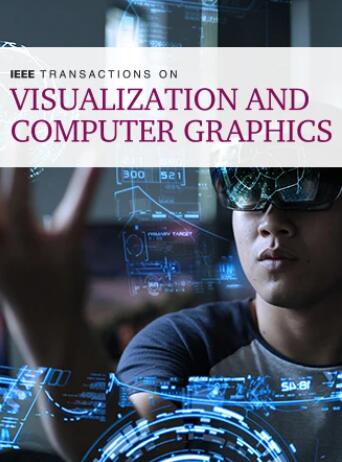Graph Exploration with Embedding-Guided Layouts
IF 6.5
1区 计算机科学
Q1 COMPUTER SCIENCE, SOFTWARE ENGINEERING
IEEE Transactions on Visualization and Computer Graphics
Pub Date : 2022-08-29
DOI:10.48550/arXiv.2208.13699
引用次数: 1
Abstract
Node-link diagrams are widely used to visualize graphs. Most graph layout algorithms only use graph topology for aesthetic goals (e.g., minimize node occlusions and edge crossings) or use node attributes for exploration goals (e.g., preserve visible communities). Existing hybrid methods that bind the two perspectives still suffer from various generation restrictions (e.g., limited input types and required manual adjustments and prior knowledge of graphs) and the imbalance between aesthetic and exploration goals. In this paper, we propose a flexible embedding-based graph exploration pipeline to enjoy the best of both graph topology and node attributes. First, we leverage embedding algorithms for attributed graphs to encode the two perspectives into latent space. Then, we present an embedding-driven graph layout algorithm, GEGraph, which can achieve aesthetic layouts with better community preservation to support an easy interpretation of the graph structure. Next, graph explorations are extended based on the generated graph layout and insights extracted from the embedding vectors. Illustrated with examples, we build a layout-preserving aggregation method with Focus+Context interaction and a related nodes searching approach with multiple proximity strategies. Finally, we conduct quantitative and qualitative evaluations, a user study, and two case studies to validate our approach.图形探索与嵌入引导布局
节点链接图被广泛用于可视化图形。大多数图布局算法仅使用图拓扑来实现美学目标(例如,最小化节点遮挡和边缘交叉)或使用节点属性来实现探索目标(例如,保留可见社区)。现有的结合两种视角的混合方法仍然受到各种生成限制(例如,有限的输入类型,需要手动调整和对图的先验知识)以及美学和探索目标之间的不平衡。在本文中,我们提出了一种灵活的基于嵌入的图探索管道,以充分利用图拓扑和节点属性的优点。首先,我们利用属性图的嵌入算法将两个透视图编码到潜在空间中。然后,我们提出了一种嵌入驱动的图形布局算法GEGraph,该算法可以实现美观的布局,并且具有更好的社区保存性,以支持易于解释的图结构。接下来,基于生成的图形布局和从嵌入向量中提取的见解扩展图形探索。通过实例说明,我们构建了一种具有焦点+上下文交互的布局保持聚合方法和一种具有多个邻近策略的相关节点搜索方法。最后,我们进行定量和定性评估,用户研究和两个案例研究来验证我们的方法。
本文章由计算机程序翻译,如有差异,请以英文原文为准。
求助全文
约1分钟内获得全文
求助全文
来源期刊

IEEE Transactions on Visualization and Computer Graphics
工程技术-计算机:软件工程
CiteScore
10.40
自引率
19.20%
发文量
946
审稿时长
4.5 months
期刊介绍:
TVCG is a scholarly, archival journal published monthly. Its Editorial Board strives to publish papers that present important research results and state-of-the-art seminal papers in computer graphics, visualization, and virtual reality. Specific topics include, but are not limited to: rendering technologies; geometric modeling and processing; shape analysis; graphics hardware; animation and simulation; perception, interaction and user interfaces; haptics; computational photography; high-dynamic range imaging and display; user studies and evaluation; biomedical visualization; volume visualization and graphics; visual analytics for machine learning; topology-based visualization; visual programming and software visualization; visualization in data science; virtual reality, augmented reality and mixed reality; advanced display technology, (e.g., 3D, immersive and multi-modal displays); applications of computer graphics and visualization.
 求助内容:
求助内容: 应助结果提醒方式:
应助结果提醒方式:


